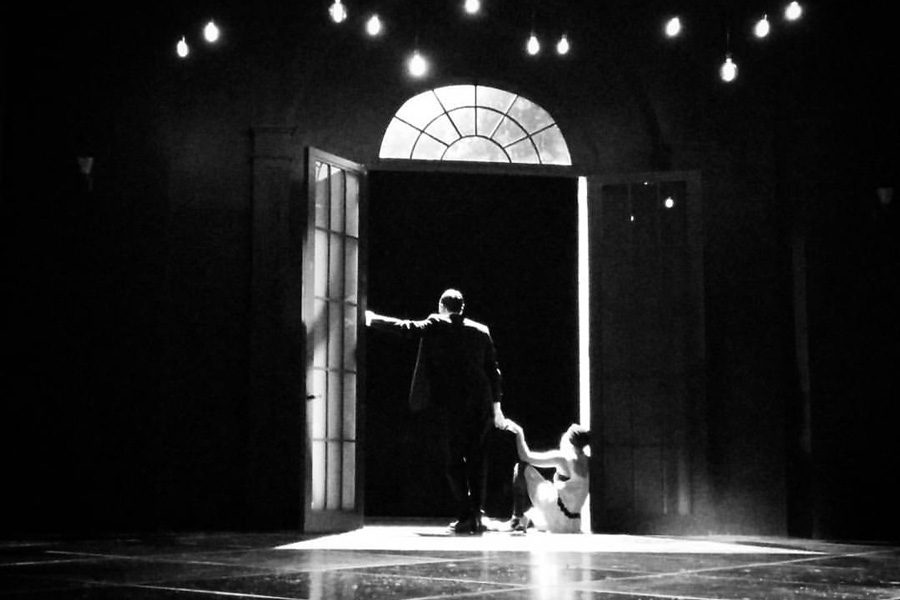Adaptation of ‘The Great Gatsby’ focuses on characters’ internal shame
Performers rehearse for the upcoming production of “The Great Gatsby.” Northwestern’s first fall mainstage production premieres Friday in the Josephine Louis Theater.
October 12, 2016
A&E
A high school classic will take center stage in a college theater venue for Northwestern’s first mainstage production of the year.
“The Great Gatsby,” the stage adaptation of F. Scott Fitzgerald’s novel, tells the story of the clash of “new” and “old money” in New York, while critically examining themes of the American Dream in the 1920s.
Director and third year graduate student Michael Cotey said his version of the American classic will differ from other productions because the show will focus more on the characters’ feelings of guilt.
Cotey said “The Great Gatsby,” his third and final project for his master’s program, is his biggest yet. The production premieres Friday in the Josephine Louis Theater, put up by the Virginia Wadsworth Wirtz Center for the Performing Arts.
“(I thought) what would it be like going back now to this book and rereading it and reengaging with the story now … and trying to find something new with it,” Cotey said.
Cotey wanted to approach the play with “fresh eyes” and focus on the themes he felt were most important to the narrative. He said he was interested in how the characters carried the “burden of shame” and attempted to fill that emptiness with money, parties, danger and risk.
Despite their efforts, Cotey said none of the characters are able to really escape it in the end.
“They’re like swimmers who try to keep themselves above water,” he said, “but there’s this certainty that they’re going to end up drowning at the end.”
Communication junior Noah LaPook, who plays protagonist Nick Carraway in the production, said the themes of shame and vulnerability echo students’ experiences in college. Similarly to how Carraway is swept up by the glamor of the new setting, students on a college campus for the first time can be “blinded by the spectacle,” LaPook said.
In fact, he said the rehearsal process reminded him of his first days at Northwestern, going to fraternity parties.
“I remember the first party I went to here. I walked in and was very swept up in the world,” LaPook said. “On the surface people are laughing and drinking and partying and dancing, and then you’re there for long enough, and you realize there’s this undercurrent of anxiety and fear, and there’s a lot of disgusting things happening in unspoken ways.”
Cotey said the script also posed many technical challenges because it condenses a 180-page novel — there are 17 scene changes in the show in total.
Third-year graduate student Lauren Nichols, who set designed the production, said she and Cotey tried to create Gatsby’s luxurious world while still executing scene changes by stripping the set pieces to the essentials for each scene.
There’s also an ensemble that doesn’t speak but helps move the furniture and are pieces of the set themselves, Nichols said. The ensemble members form the structure of a car, become stands for flower pots and create the image of water with fabric, she said.
Nichols said the show strives to surprise the audience visually and theatrically.
“The whole show is unexpected from what you would assume you’d be coming to see as part of Gatsby’s story,” Nichols said.
Email: [email protected]


